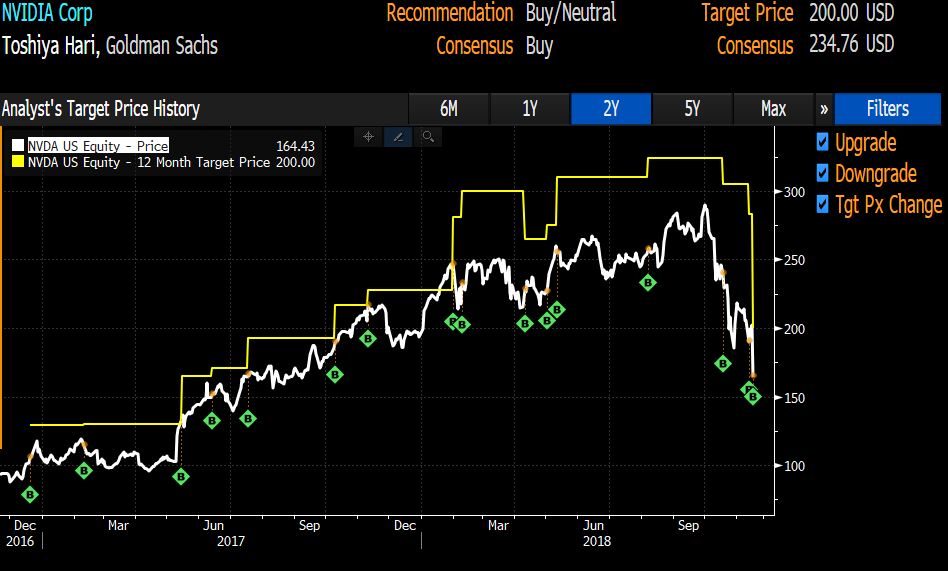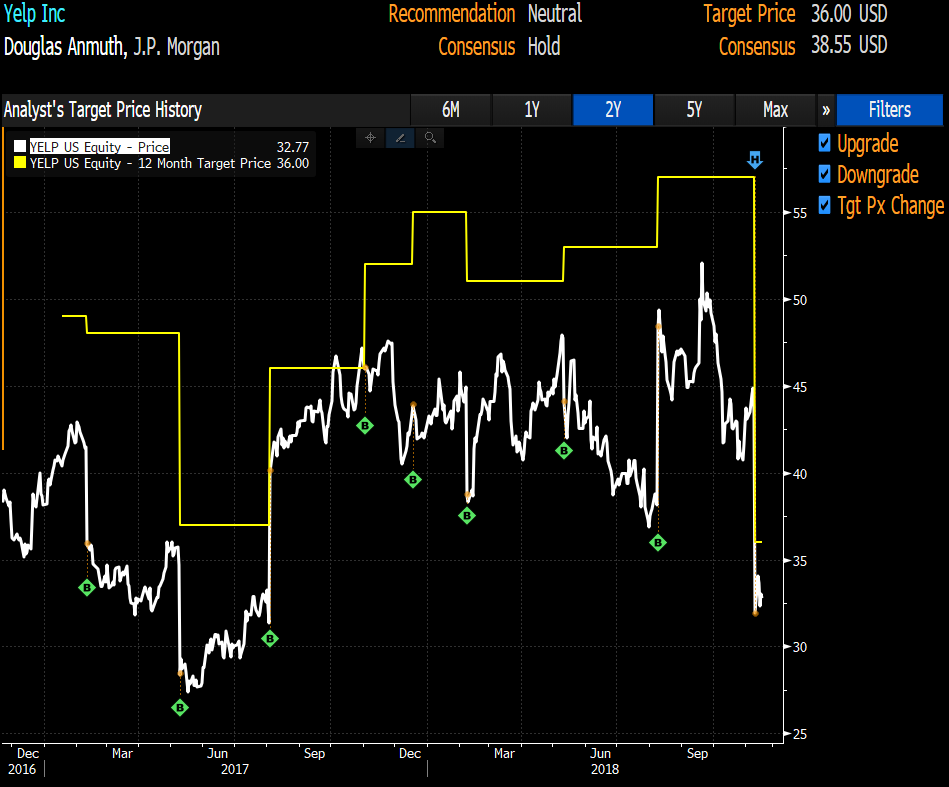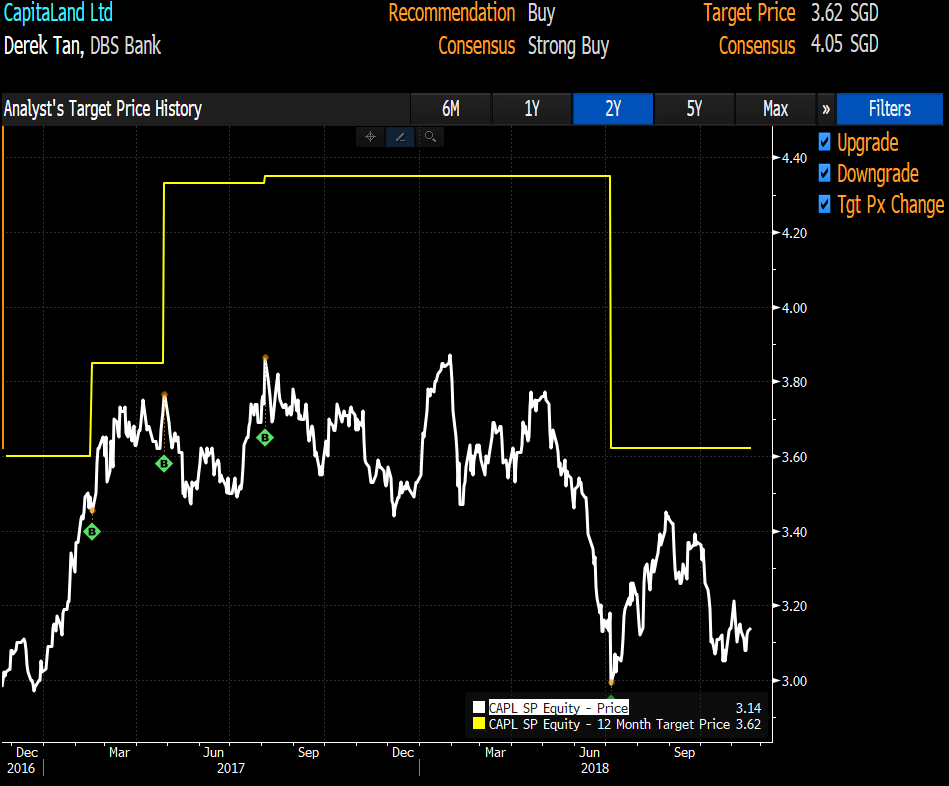Following the Pied Piper
14 June 2019

“The four most dangerous words in investing are: “This time it’s different.”
– Sir John Templeton
What’s your strategy for making money from the stock and bond markets?
Most people choose to follow the recommendations of investment analysts, strategists, economists and other financial experts. It seems like the logical thing to do. With all the brains, degrees, experience and computing power that go into those recommendations, one would expect them to contain valuable insights into the investing world.
However, as it turns out, this is not the case.

In late 2018, investment bank Goldman Sachs made a public apology for how wrong their call had been on chipmaker Nvidia. This was surprising, given that financial institutions rarely apologise when their recommendations go wrong – which is most of the time.
The diagram below shows the calls that Goldman Sachs had made on the Nvidia stock over the past two years. Investors who had followed their Buy calls (green diamond) would have profited, but the lack of corresponding Sell calls would have meant that those profits wouldn’t have been realised. Furthermore, the bank still continued to call for a buy (albeit at a drastic reduction in target price) even after the stock had collapsed nearly 40%.

Even after Nvidia highlighted that they were facing weak demand that was likely to limit future earnings, Goldman Sachs did not change their stance. Why is that so? When analysts are assigned to follow a stock and put in months of work researching, building financial models, meeting the company management, being interviewed on TV and writing pages of reports, it is very difficult for them to just shove all of this aside and change their mind. All that vested interest in their original stance creates a kind of Stockholm Syndrome of the financial world. It becomes just too hard for them to let it go and admit their analysis could have been very wrong.
Goldman Sachs is far from alone in this. In September 2018, JP Morgan added Yelp to its list of Stock Market Best Ideas after Yelp’s share price jumped to over $50. The bank also raised its target price to over $55. Only after the sell-off in October 2018 did the bank change its rating of Yelp to Neutral (what is Neutral, anyway? Do investors buy or sell?) and drastically reduce the target price as well. However, none of this would have done investors any good, as it would have been too late by then.

Similar examples closer to home include this recommendation on Capitaland by DBS analysts:

Following Buy calls or expecting companies to hit their target prices usually results in disappointment. In fact, you will notice from all three examples that the target price listed by the analysts was always far above the actual price of the shares.
These problems are documented in the working paper, “Diagnostic Expectations and Stock Returns. It’s an update of a 1996 study where the author found that following optimistic analyst recommendations only yielded marginal gains, compared to following stocks that analysts disliked. Despite those investment specialists eating and breathing everything finance, it turns out that they aren’t actually able to predict stock prices at all.
Research from as far back as in the 1930s, to the end of the century, to more recent times show that it is practically impossible to consistently profit from stock market forecasts. Ordinary investors should take note, and not blindly follow such recommendations in the same way the rats followed the Pied Piper to certain death.
Another reason picking winning stocks is so difficult is described in this study by Dr. Henrik Bessembinder, “Do Stocks Outperform Treasury Bills?” Looking at data from the US stock market from 1926-2016, he made the stunning discovery that, out of the 25,300 companies that existed within that time period, only 4% – or around 1,000 companies – were responsible for the entire returns of the stock market. The remaining 24,000 companies had zero to negative returns.
Furthermore, each of those successful companies did well over different time periods. How then would investors know which ones to buy, and when? Given the persistent failure of stock predictions, what should investors do?
- Know that investing is not about speculation: Making short-term concentrated bets is not proper investing; it is gambling. You may wish to experiment with some ‘play money’ this way, but your retirement funds or child’s university funds should never be subject to the vagaries of investment analysts’ buy and sell calls. Practice smart and broad diversification that will help you not only capture reliable sources of return but also reduce the unnecessary risks that come from holding too few stocks, sectors or countries.
- Look beyond the headlines: The financial media emphasises the short term, often by necessity. After all, who would want to trade or buy the newspaper if they published the same long-term prediction every day? However, it’s the long term that you should concern yourself with when investing for your future.
- Focus on what you can control: Like the weather, you cannot control which stock will do well, or which currencies will go up or down. The only thing you can control is your own behaviour and how you respond to all this financial noise from an industry that profits every time you trade. You can control how diversified your portfolio is. You can control how much and how often you trade. You can also control how volatile your investments are by simply adjusting your percentage of safe fixed income.
The truth remains that nobody can predict the future. So, save yourself some time, trouble and costly investing lessons by structuring a diversified portfolio that matches your goals and circumstances, and work with a fiduciary adviser to help you stay on track.
#
If you have found this article useful and would like to schedule a complimentary session with one of our advisers, you can click the button below or email us at customercare@gyc.com.sg.
IMPORTANT NOTES: All rights reserved. The above article or post is strictly for information purposes and should not be construed as an offer or solicitation to deal in any product offered by GYC Financial Advisory. The above information or any portion thereof should not be reproduced, published, or used in any manner without the prior written consent of GYC. You may forward or share the link to the article or post to other persons using the share buttons above. Any projections, simulations or other forward-looking statements regarding future events or performance of the financial markets are not necessarily indicative of, and may differ from, actual events or results. Neither is past performance necessarily indicative of future performance. All forms of trading and investments carry risks, including losing your investment capital. You may wish to seek advice from a financial adviser before making a commitment to invest in any investment product. In the event you choose not to seek advice from a financial adviser, you should consider whether the investment product is suitable for you. Accordingly, neither GYC nor any of our directors, employees or Representatives can accept any liability whatsoever for any loss, whether direct or indirect, or consequential loss, that may arise from the use of information or opinions provided.









